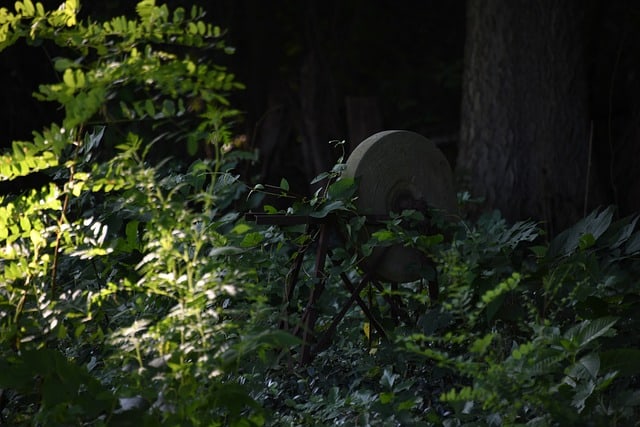
g4e7562ecf9784856b7f487ef5ae099c570db3e24292ddd4089ac2dba67d0dc2f342ce0787180c23247f411c9e61657f2ea03cb9af768b5a5d1eab023c103e100 640
Sharpening stones are an essential tool for any woodworker, knife enthusiast, or anyone who needs to keep their tools sharp. But how long should you soak your sharpening stones before use? This guide will provide you with the information you need to know about soaking times for sharpening stones, so you can get the most out of your sharpening stones and keep your tools in top condition.
Sharpening Your Tools: How Long Should You Soak Your Sharpening Stone?
Sharpening your tools is an important part of maintaining them. A sharpening stone is a great tool to use for sharpening, but it needs to be soaked in water before use. Soaking your sharpening stone helps to keep it lubricated and prevents it from becoming clogged with metal shavings. But how long should you soak your sharpening stone?
The amount of time you should soak your sharpening stone depends on the type of stone you are using. Oil stones should be soaked for at least 10 minutes, while water stones should be soaked for at least 20 minutes. If you are using a diamond stone, you do not need to soak it at all. Instead, you should just rinse it with water before use.
Once your sharpening stone is soaked, you should use a damp cloth to wipe off any excess water. This will help to keep your stone from becoming too wet and will also help to keep it clean. After wiping off the excess water, you can begin sharpening your tools.
Sharpening your tools with a sharpening stone is a great way to keep them in good condition. Soaking your sharpening stone before use is an important step in the process, and the amount of time you should soak it depends on the type of stone you are using. Oil stones should be soaked for at least 10 minutes, water stones should be soaked for at least 20 minutes, and diamond stones should be rinsed with water before use.
Sharpening Stone Soaking: How Much is Too Much?
Sharpening stones are an essential tool for any woodworker or knife enthusiast. They are used to sharpen and hone blades, and can be used to maintain the sharpness of a blade over time. However, it is important to know how much to soak a sharpening stone before use, as too much soaking can damage the stone.
Sharpening stones are typically made of either natural or synthetic materials. Natural stones, such as Arkansas stones, are made from natural minerals and are usually softer than synthetic stones. Synthetic stones, such as diamond stones, are made from man-made materials and are usually harder than natural stones. Both types of stones require soaking before use, but the amount of time and water needed varies depending on the type of stone.
For natural stones, it is recommended to soak them for 10-15 minutes in water. This will allow the stone to absorb the water and become softer, which will make it easier to sharpen the blade. For synthetic stones, it is recommended to soak them for 5-10 minutes in water. This will allow the stone to absorb the water and become harder, which will make it easier to hone the blade.
It is important to note that soaking a sharpening stone for too long can cause damage to the stone. If a natural stone is soaked for too long, it can become too soft and will not be able to sharpen the blade properly. If a synthetic stone is soaked for too long, it can become too hard and will not be able to hone the blade properly. Therefore, it is important to follow the recommended soaking times for each type of stone.
In conclusion, it is important to know how much to soak a sharpening stone before use. Natural stones should be soaked for 10-15 minutes, while synthetic stones should be soaked for 5-10 minutes. Soaking a sharpening stone for too long can cause damage to the stone, so it is important to follow the recommended soaking times for each type of stone.
Sharpening Guide and Stone Cleaning Tips: How to Keep Your Tools in Top Condition
Sharpening tools and keeping them in top condition is essential for any woodworker or DIY enthusiast. Whether you’re using a sharpening stone, a honing guide, or a combination of both, it’s important to know how to properly maintain your tools. Here are some tips for sharpening guide and stone cleaning to help you keep your tools in top condition.
Sharpening Guide Maintenance
A sharpening guide is a great tool for keeping your blades sharp and in good condition.
To keep your guide in top condition, it’s important to clean it regularly. Use a soft cloth to wipe away any dust or debris that has accumulated on the guide. You can also use a mild detergent and warm water to clean the guide if necessary.
It’s also important to check the guide for any signs of wear or damage. If you notice any cracks or chips in the guide, it’s best to replace it as soon as possible. This will help ensure that your blades stay sharp and in good condition.
Sharpening Stone Cleaning
Sharpening stones are an essential tool for keeping your blades sharp and in good condition. To keep your stones in top condition, it’s important to clean them regularly. Use a soft cloth to wipe away any dust or debris that has accumulated on the stones. You can also use a mild detergent and warm water to clean the stones if necessary.
It’s also important to check the stones for any signs of wear or damage. If you notice any cracks or chips in the stones, it’s best to replace them as soon as possible. This will help ensure that your blades stay sharp and in good condition.
Sharpening Guide and Stone Care Tips
To keep your sharpening guide and stones in top condition, it’s important to follow a few simple tips. First, always store your sharpening guide and stones in a dry, dust-free environment. This will help prevent any dust or debris from accumulating on the tools. Second, always use a soft cloth to wipe away any dust or debris that has accumulated on the tools. Finally, check your sharpening guide and stones regularly for any signs of wear or damage. If you notice any cracks or chips in the tools, it’s best to replace them as soon as possible.
By following these simple tips, you can ensure that your sharpening guide and stones stay in top condition and help you keep your blades sharp and in good condition.
The Debate Over Soaking Whetstones: Warm or Cold Water?
Sharpening tools is an essential part of any woodworker’s toolkit. Whetstones are a popular choice for sharpening blades, but there is a debate over whether to soak them in warm or cold water before use.
The Benefits of Soaking Whetstones
Soaking a whetstone in water before use helps to keep it lubricated and prevents it from clogging with metal particles. This helps to ensure that the blade is sharpened evenly and efficiently. It also helps to reduce the amount of time it takes to sharpen a blade.
The Debate: Warm or Cold Water?
The debate over whether to soak a whetstone in warm or cold water is ongoing. Some woodworkers believe that warm water helps to soften the stone, making it easier to sharpen the blade. Others argue that cold water helps to keep the stone hard, which is better for sharpening.
Proponents of warm water argue that it helps to reduce the amount of time it takes to sharpen a blade. They also point out that warm water helps to keep the stone lubricated, which can help to prevent it from clogging with metal particles.
On the other hand, proponents of cold water argue that it helps to keep the stone hard, which is better for sharpening. They also point out that cold water helps to reduce the amount of time it takes to sharpen a blade.
Conclusion
The debate over whether to soak a whetstone in warm or cold water is ongoing. Ultimately, it is up to the individual woodworker to decide which method works best for them. Some woodworkers prefer to soak their whetstones in warm water, while others prefer to soak them in cold water.
We hope this guide has been helpful in understanding the soaking times for sharpening stones. We wish you the best of luck in your sharpening endeavors! Goodbye and take care!















